Text
Ok I have decided that I don't have the stamina for an october drawing challenge I am going to start #REPOSTOBER where I just repost old art that I like every day 💁♀️ JOIN ME IF YOUR DARE 🎃
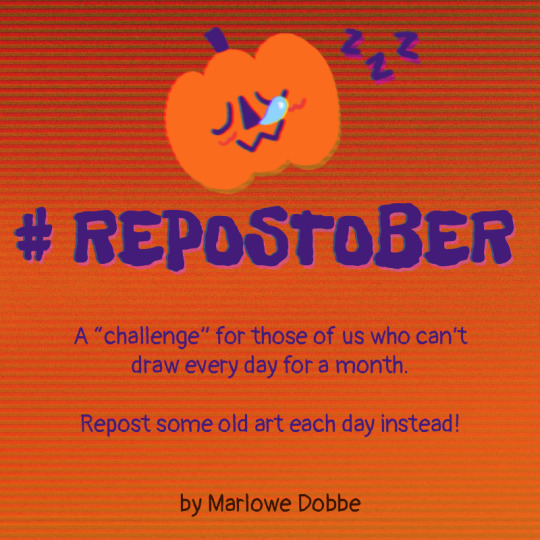
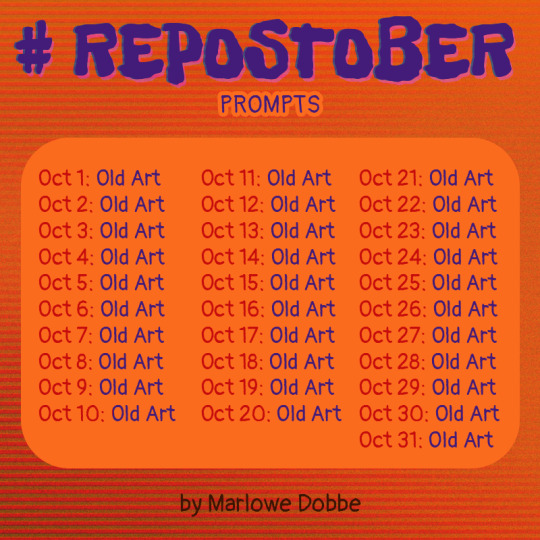
19K notes
·
View notes
Text

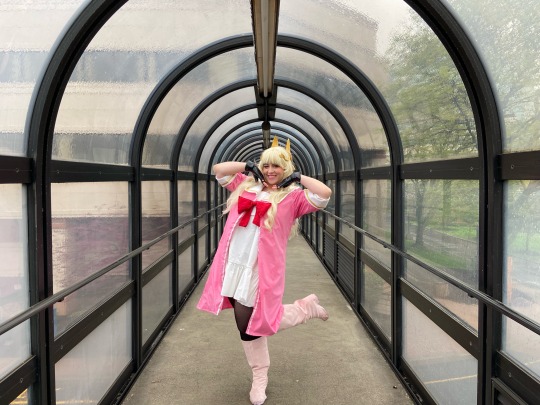
Haven’t posted cosplay on here in a while (cause I haven’t cosplayed in a while) but I attended CPAC 2023 this weekend and debuted my Fantasy Knockout cosplay! I made it in under a month and there were a lot of challenging aspects- the headpiece and boots- to figure out but I’m happy with how it came out! Although I already am planning on remaking a few things to make it even better.
#fantasy knockout#life with an ordinary guy who reincarnated into a total fantasy knockout#fabiniku#tachibana hinata#cosplay#cosplayer#my cosplay#castle point anime convention#CPAC
33 notes
·
View notes
Note
Thank you very much for your response explaining which tools you used, and the video - I have been using a 'leaf' - a tool like a tiny cupped hand - and will certainly try a triangular loop like the one you used.
I recommend any of the ribbon looped tools I showed! Even with other types of pottery/clay artwork I find them very versatile.
0 notes
Note
Hello; I saw your sgraffito tile and liked it greatly, as you have the tight level of control over the cut line that I aspire to in my own sgraffito tiles. I wondered what tool you use and how damp your clay is? thank you.
Hello! I was very surprised by this ask, and flattered actually since the piece you are talking about was actually my first time ever doing sgraffito. It's also been 2 years since I've done any sgraffito work (the Hanako piece was an assignment for my 3D Design class), but I did my best to find old photos of what I did to help explain it.
The tools were supplied by my college, but I'm pretty sure I only used a basic ribbon set (the silver/steel type). I found one photo that showed which tool I had been working with and I think I used it the most. This is just a generic picture, but I believe I used the larger diagonal one in the middle:
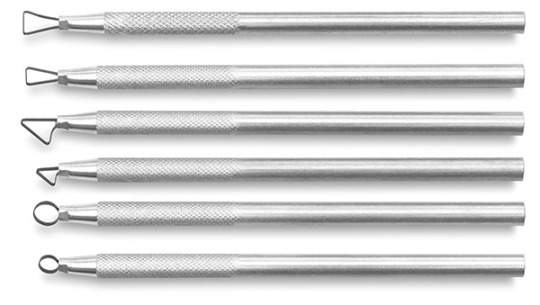
I think I also used the more needle-like ones for the outlines, obviously.

But they were mostly very generic ones, I assume. I think our school bought a lot of the supplies from Blick though, if that helps.
I do have more experience working with clay in general now though (just not sgraffito) but as for how wet the clay was, I think I recall it was actually quite dry. Not hard/bone dry of course, but I remember our professor emphasizing the clay being leathery-hard before we began working. We were working on the clay at home and at the studio, so even though it was in a bag with some moisturize while working on it, it did somewhat harden over time, but it's best to do it when it's at the stage.
I'm sorry I can't offer more in the way of specifics, but I did manage to find the video our professors used to explain to us how to do sgraffito so I will attach that as well!
youtube
0 notes
Text
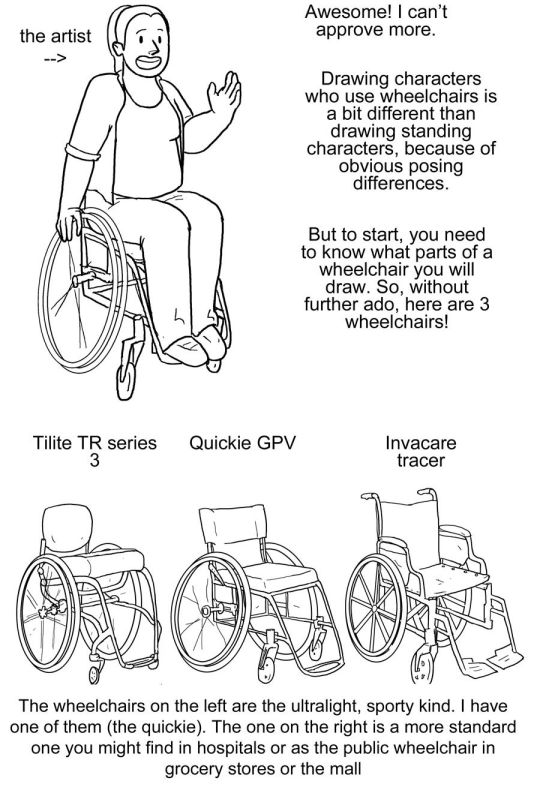
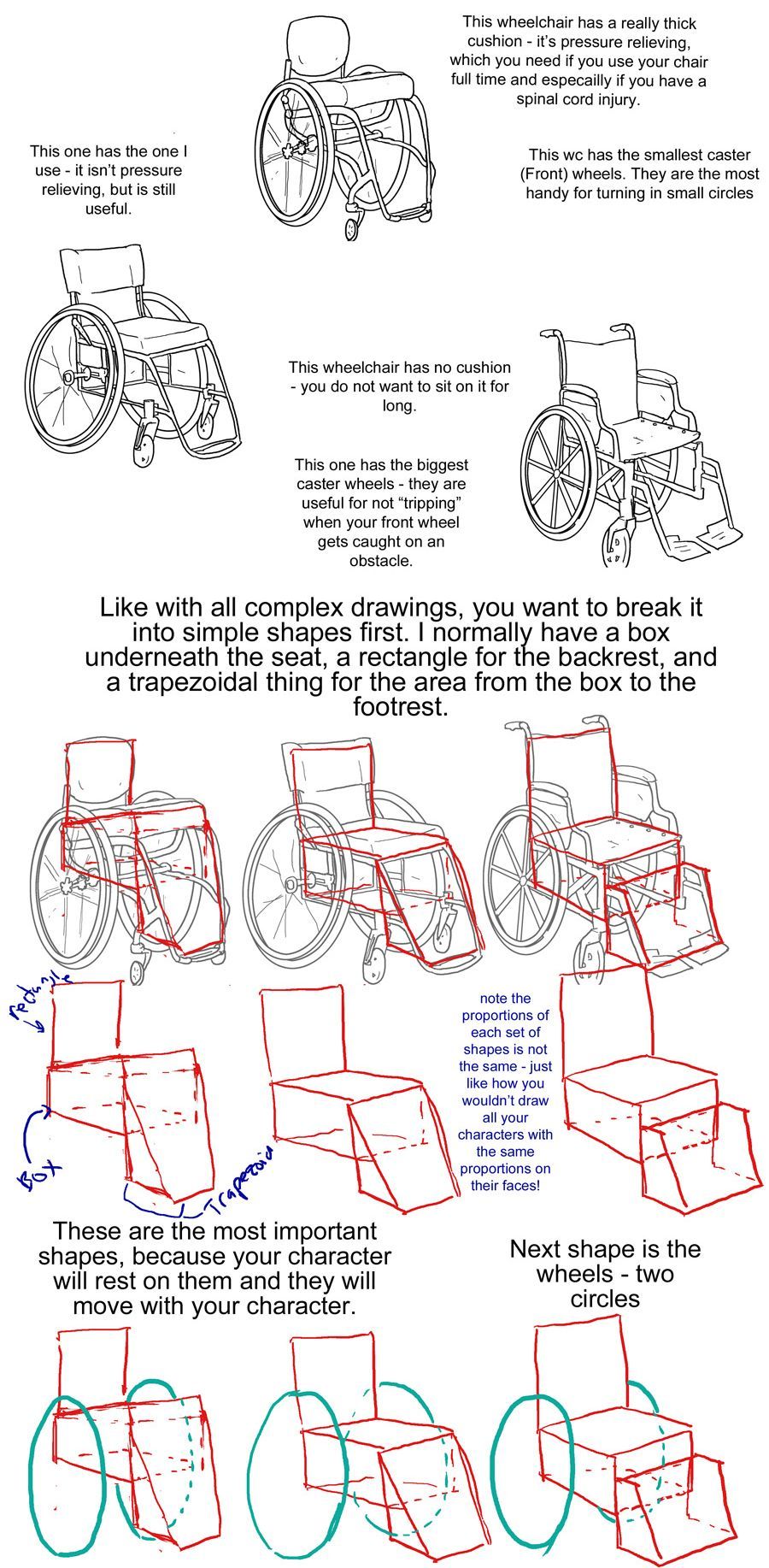
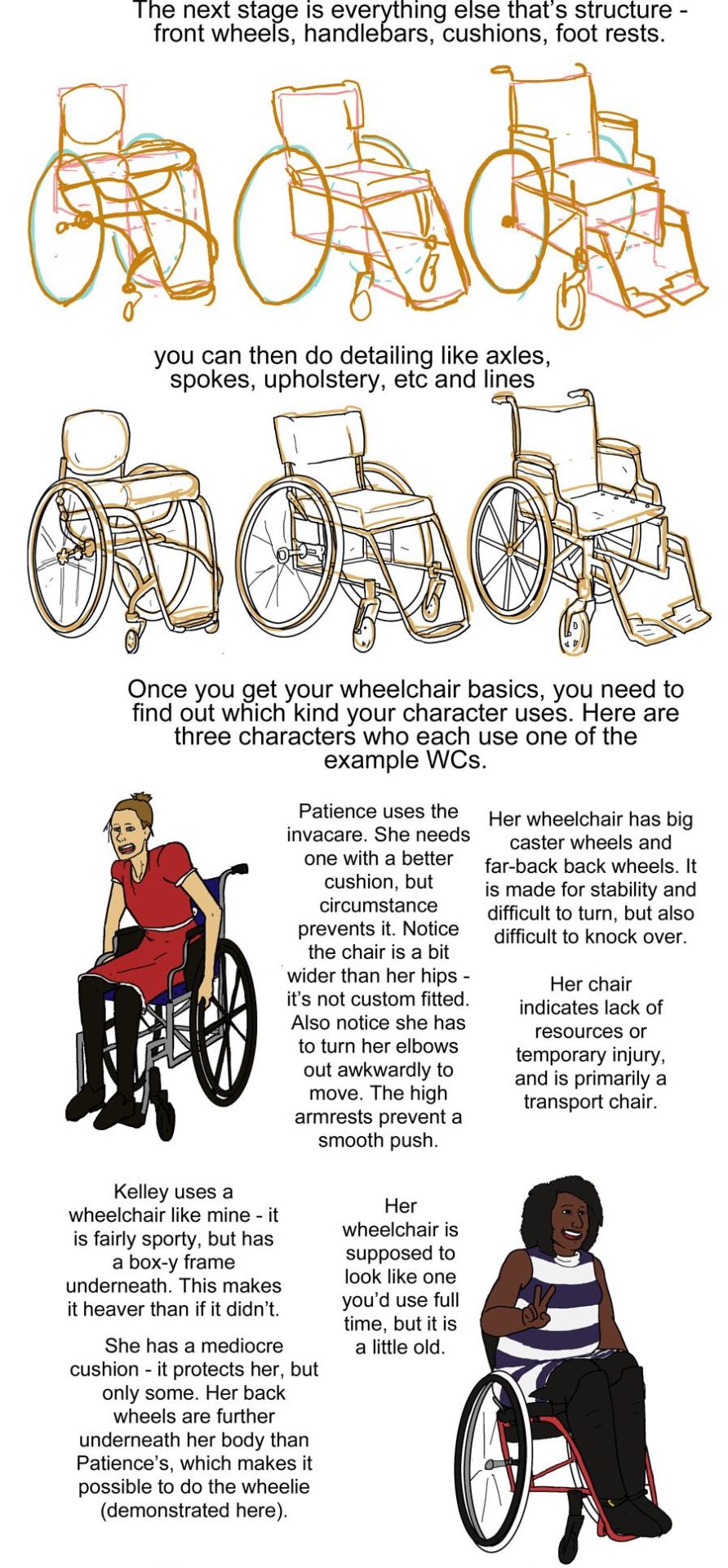
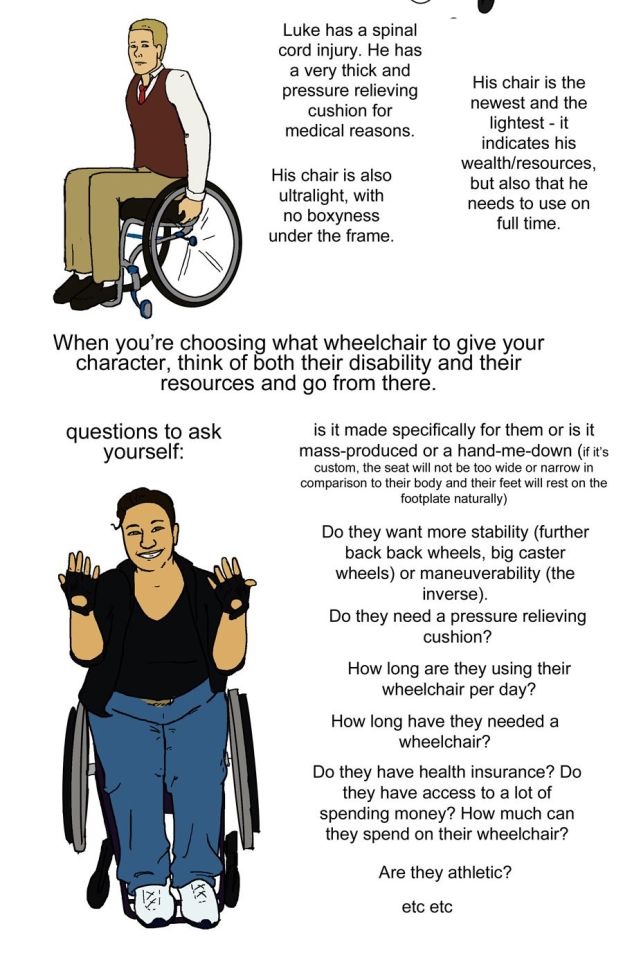
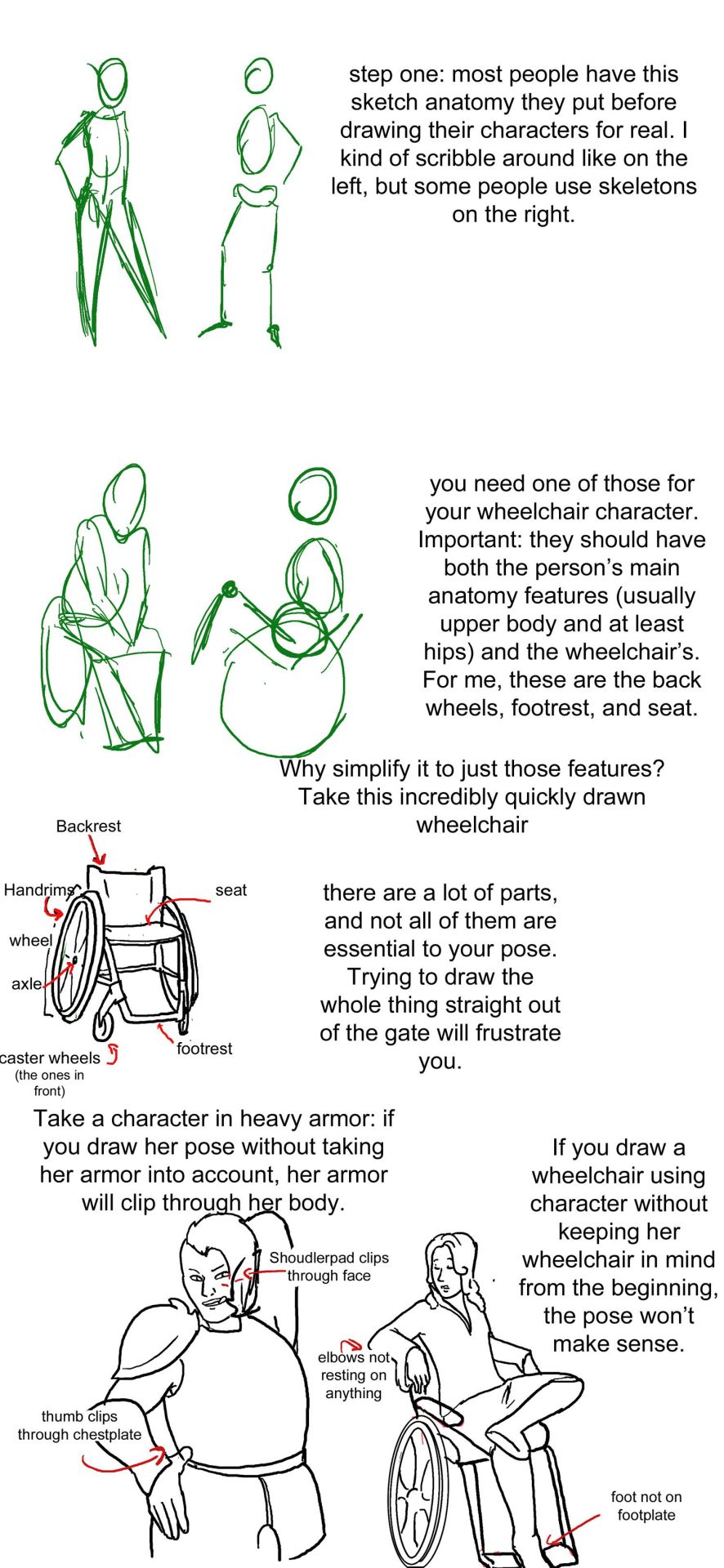
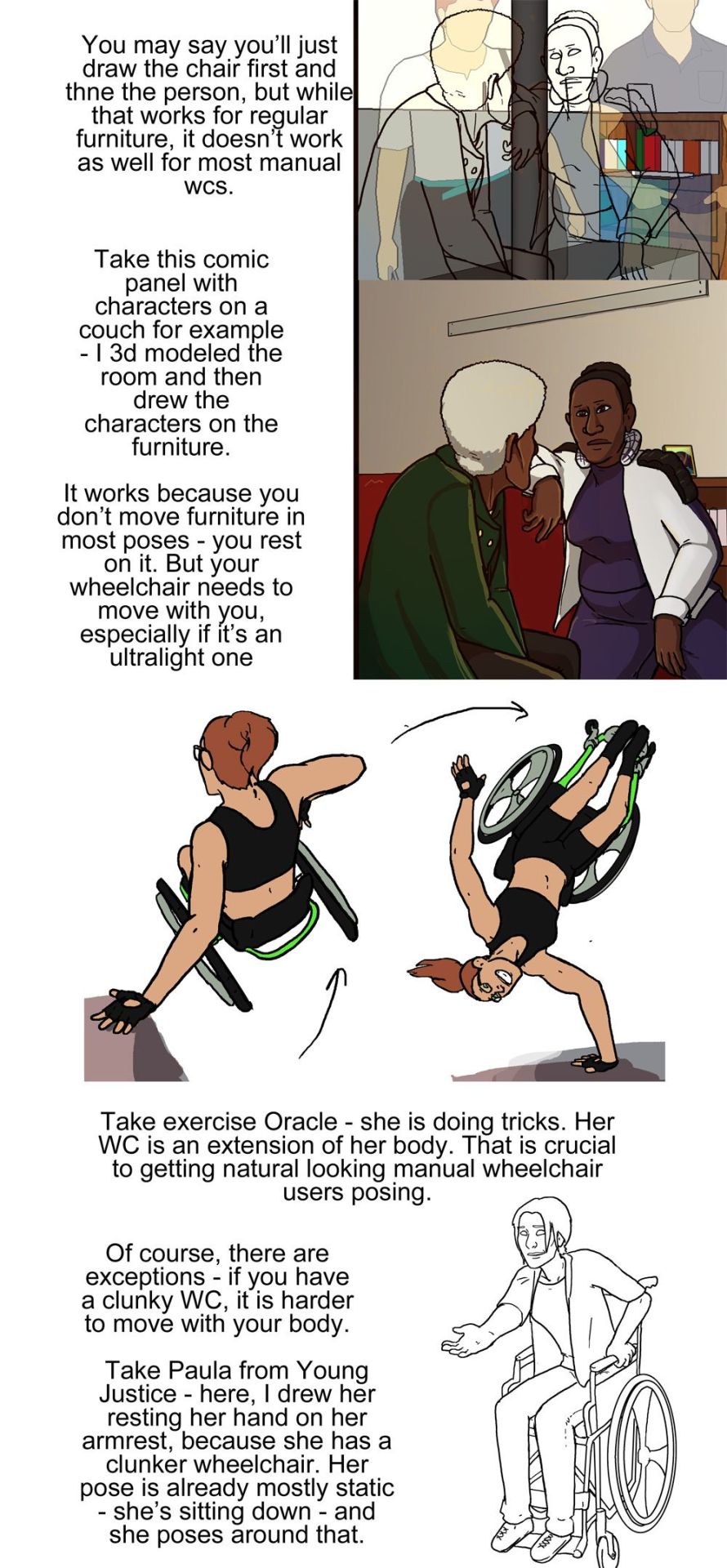
Manual Wheelchair Tutorial by Fade31415
So... I technically drew this 3 years ago but forgot to post it. I think I was going to clean up the end and make a nice recap, but I ran out of steam and then just left it as a wip for years. I got reminded of it because I was talking to a friend about how to draw wheelchairs today.
This covers most of what I view as the most common errors when it comes to drawing characters who use manual wheelchairs. I hope it helps you a lot.
Image description is in alt text, but there is a back up image description under the cut in case that does not work for some reason
[image description: a 4 picture long wheelchair tutorial. the background is white and the text, when it appears, is black and in calibri. each step will be labeled with "Step #" and a description of the drawing next to it, and "text" and then the text that is written to explain it to follow.
Step one text: So, you want to draw a character who uses a manual wheelchair? Awesome! I can't approve more. Drawing characters who use wheelchairs is a bit different than drawing standing characters, because of obvious posing differences. But to start, you need to know what parts of a wheelchair you will draw. So, without further ado, here are 3 wheelchairs!
Step one image: a simplified drawing of a chubby woman sitting in a quickie GPV manual wheelchair and resting her hand on the handrim of one of the wheels. this is labeled "the artist"
step two: next there is a lineart drawing of three wheelchairs. one is a tilite TR series 3. this is an ultralight wheelchair with a bucket seat (the back is lower than the front), a big cushion and a short backrest that kind of contours to the back of the person who would sit in it. the caster wheels (front wheels) are very small and the footrest is just two little metal bars. next image is a quickie GPV. this is also an ultralight wheelchair with a low back, but its caster wheels are slightly larger, the back has regular upholstery (it does not look like it was made to conform to the back of the person who sits there) and the frame is boxier -- there is no bar underneath the seat where the wheels would attach, rather each wheel is attached to the side of the chair. the next wheelchair is an invacare tracer. it is how most people imagine wheelchairs when they hear 'wheelchair'. it has no cushion and it has a high backrest with handles. it has high armrests that would be comfortable to rest your elbows on if you were just sitting. the wheels are not bicycle wheels like the previous two but are rather plastic. it has big footrests and big caster wheels.
text: the wheelchairs on the left are the ultralight, sporty kind. I have one of them (the quickie). the one on the right is a more standard one you might find in hospitals or as the public wheelchair in grocery stores or the mall.
step three: first is text to accompany the tilite. "This wheelchair has a really thick cushion - it's pressure relieving, which you need if you use your chair ufll tiem and especially if you have a spinal cord injury. This wc has the smallest caster (front) wheels. They are hte most handy for turning in small circles." next there is text to accompany the quickie gpv: "This one has the one I use -- it isn't pressure relieving, but is still useful." next is text to accompany the invacare: "this wheelchair has no cushion - you do not want to sit on it for long. This one has the biggest caster wheels - they are useful for not 'tripping' when your front wheel gets caught on an obstacle.”
step four text: like with all complex drawings, you want to break it into simple shapes first. I normally have a box underneath the seat, a rectangle for the backrest, and a trapezoidal thing for hte area from the box to the footrest. these are the most important shapes, because your character will rest on them and they will move with your character.
step four image: the lineart of each wheelchair has been put on reduced opacity, so we can see the square representing the backrest of each seat (the square is the smallest for the tilite and biggest for the invacare), the box for each seat and area underneath it, and the trapezoid for the footrests. the next step labels the images of these simplified shapes as the lineart is removed. "Note the proportions of each set of shapes is not the same - just like how you wouldn't draw all your characters with the same proportions on their faces!"
step 5: we see the same shapes to form the wheelchair, but now with blue circles drawn where the back wheels would be.
text: next shape is the wheels - two circles
step six: next we see the wheels and shapes have been reduced in opacity and the basic structure of everything about each wheelchair: footrests, caster wheels, upholstery details, axles has been drawn on in orange.
text: the next stage is everything else that's structure - front wheels, handlebars, cushions, footrests.
Step seven: we see the lineart on top of the lowered opacity sketch.
text: you can then do detailing like axles, spokes, upholstery, etc and lines
step eight: next we see three drawings of different characters. there is patience, a skinny white woman sitting in a blue invacare wheelchair. kelley, a slightly chubby black woman wearing a stripey dress sitting in a red quickie gpv wheelchair and doing a wheelie while smiling. then luke, a white man with short blond hair wearing khaki pants. he is sitting in a tilite chair.
text: once you get your wheelchair basics, you need to find out which kind your character uses. here are three characters who each use one of the example WCs. patience uses the invacare. she needs one with a better cushion, but circumstance prevents it. Notice the chair is a bit wider than her hips - it's not custom fitted. Also notice she has to turn her elbows out awkwardly to move. the high armrests prevent a smooth push. her wheelchair has big caster wheels and far-back back wheels. it is made for stability and difficult to turn,but also difficult to knock over. Her chair indicates a lack of resources or temporary injury, and is primarily a transport chair
kelley uses a wheelchair like mine - it is fairly sporty, but has a box-y frame underneath. this makes it heaver than if it didn't.she has a mediocre cushion - it protects her, but only some. her back wheels are further underneath her body than Patience's, which makes it possible to do the wheelie (demonstrated here). her wheelchair is supposed to look line one you'd use full time, but it is a little old.
luke has a spinal cord injury. he has a very thick pressure relieving cushion for medical reasons. his chair is also ultralight, with no boxyness under the frame. his chair is the newest and lightest - it indicates his wealth/resources, but also that he needs to use on full time.
step nine: just a drawing of me sitting in my wheelchair holding my hands up to show fingerless wheelchair gloves. we're looking at me from above.
text: when you're choosing what wheelchair to give your character, think of both their disability and their resources and go from there. questions to ask yourself: is it made specifically for them or is it mass-produced or a hand-me-down (if it's custom, the seat will not be too wide or narrow in comparison to their body and their feet will rest on the footplate naturally). do they want more stability (further back back wheels, big caster wheels) or maneuverability (the inverse). do they need a pressure relieving cushion? how long are they using their wheelchair per day? how long have they needed a wheelchair? Do they have health insurance? do they have access to a lot of spending money? How much can they spend on their wheelchair? are they athletic etc etc
posing steps:
step one: a sketch of two people standing up. one just shows the outline of a person's body, with legs that are ind of triangle shaped, the other shows a sketched pelvis and rib cage to go along with the bones of the legs and arm. text: step one: Most people have this sketch anatomy they put before drawing their characters for real. I kind of scribble around like on the left, but some people use skeletons on the right.
step two: there are now too sketched pictures of people in wheelchairs. one shows lightly traced human form (arms articulated, curve for a stomach, legs that are kind of triangle shaped and pointing down) sitting in a wheelchair that is just the sketch of footrests and wheels. the other sketch shows the sketch of a body with a circle for hips and an oval for a rib cage and the person doing a wheelie (lifting the front end of the wheelchair off the ground and leaning back). their wheelchair is also sketched out and defined by a circle for their wheels and 2 lines, 1 of the seat and 1 for the backrest. text: you need one of those for your wheelchair character. important: they should have both the person's main anatomy features (Usually upper body and at least hips) and the wheelchair's. for me, these are the back wheels, footrest, and seat. why simplify to just those features? Take a look at this incredibly quickly drawn wheelchair.
step three: there is a lineart drawing of a manual wheelchair with slightly cambered (angled towards the seat) wheels, a backrest, and a footrest. the frame is light and there are no handlebars. there are labels pointing to different parts of the wheelchair: Backrest, handrims, wheel, axle, seat, footrest, and caster wheels (the ones in front). text: there are a lot of parts, and not all of them are essential to your pose. trying to draw the whole thing straight out of the gate will frustrate you.'
step four text: take a character in heavy armor: if you draw her pose without taking her armor into account, her armor will clip through her body. if you draw a wheelchair using character without keeping her wheelchair in mind from the beginning, the pose won't make sense.
step four image: next we see two lineart drawings of different characters. one is a bulky woman wearing plate armor. her hand is on her hip and she is trying to scratch her back with the other hand. there is the label "shoudlerpad clips through face" and "thumb clips through chestplate." the next drawing shows a woman in a wheelchair with one foot rested on her knee and her arms rested back, such that they would be rested on the back of a regular chair, but the back of her wheelchair is not wide enough for them to actually be resting on anything. the text here reads "elbows not resting on anything" and "foot not on footplate"
step five: there are two images, one is lineart on top of a 3d modelled apartment with sketchup, the other is a colored in version of that lineart with the background also colored in and no longer a 3d modelled screencap two characters, one old woman wearing a green jacket and one younger woman wearing a white shirt and blue undershirt, are sitting on a couch. the old woman is leaning forward and the young woman is resting her arm on the couch. behind the young woman is a bookshelf.
step five text: you may say you'll just draw the chair first and then the person, but while that works for regular furniture, it doesn't work as well for most manual wcs. take this comic panel with characters on a couch for example - I 3d modeled the room and then drew the characters on the furniture. it works because you don't move furniture in most poses - you rest on it. but your wheelchair needs to move with you, especially if it's an ultralight one.
step six image: there is a flat color drawing of barbara gordon in her wheelchair. she is wearing a black sportsbra and black shorts. in the first image we see she is doing tricks in her chair, zooming through the air (as if she has just launched herself off the ground in a skater park or somethign) while her left hand is resting on a structure and her right hand is heading towards the right handrim. the next image shows her right hand planted on the ground and her chair and body above her, such that she is briefly doing a one-handed handstand, but the motion line indicates that she is moving and this will not last. her left arm is near the handrim of her left wheel.
text: take exercise Oracle - she is doing tricks. Her WC is an extension of her body. That is crucial to getting natural looking manual wheelchair users after posing.
step seven: we see a lineart drawing of paula from young justice. she is sitting in a standard manual wheelchair with high armrests (goes up to the bottom of her ribs probably) and a high backrest (goes up to just below her shoulderblades). she is setting her hand on the armrest, leaning forward, and holding her other hand out.
text: of course, there are exceptions - if you have a clunky WC, it is harder to move with your body. Take Paula from young Justice - here, i drew her resting her hand on her armrest, because she has a clunker wheelchair. her pose is already mostly static - she's sitting down - and she poses around that.
49K notes
·
View notes
Text
fucked up how colors look different depending on what screen you’re looking at them on. that should be illegal I think
189K notes
·
View notes
Text
ayo i found 2 pages with head angles of humans and animals, could be useful to anyone reading this
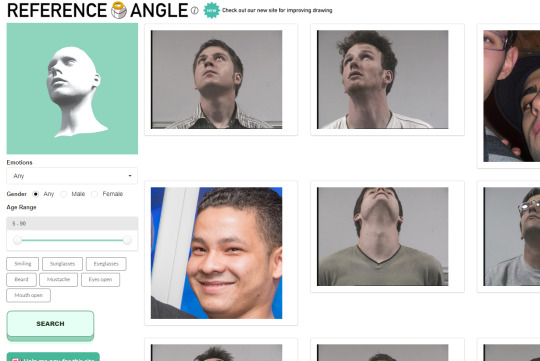
hoomans

animals
166K notes
·
View notes
Photo


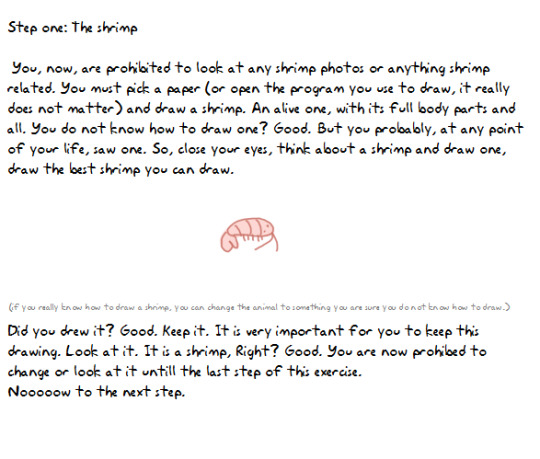


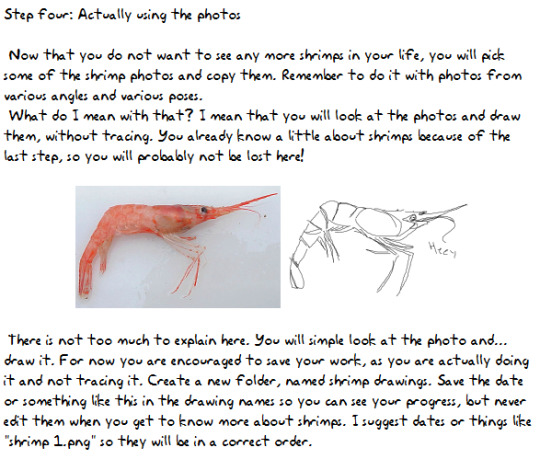


How I pratice drawing things, now in a tutorial form.
The shrimp photo I used is here
Show me your shrimps if you do this uvu
PS: lots of engrish because foreign
307K notes
·
View notes
Photo
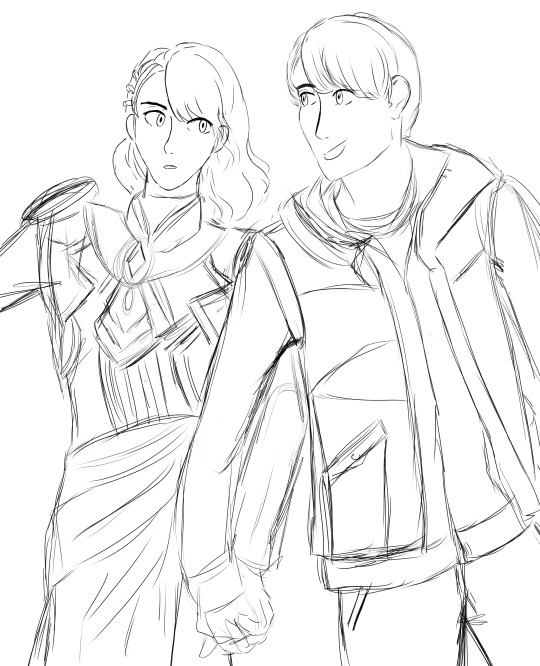
I still need to fix some anatomy things before I finish it, but I wanted to draw something for Zenkaiger now that it’s ended.....
34 notes
·
View notes
Photo


If people were wondering why I was suddenly reblogging Spongebob the Musical stuff on my main last night, it’s because I watched a high school production of it (virtually). The hyperfixation is back but I also was just amazed by the lighting and costumes of the production and I snapped this photo but then looking at the posing of the actors and the sparkles on the dress I just wanted to try drawing it.
#seems like its still a sketch but#im considering it finished#tired of doing line art lol#spongebob the musical
3 notes
·
View notes
Photo

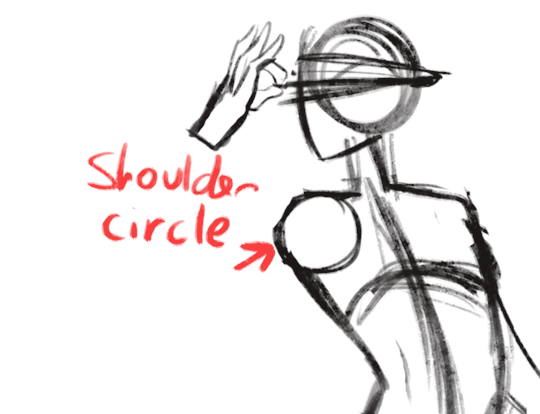
how to draw arms ? ?
912K notes
·
View notes
Photo
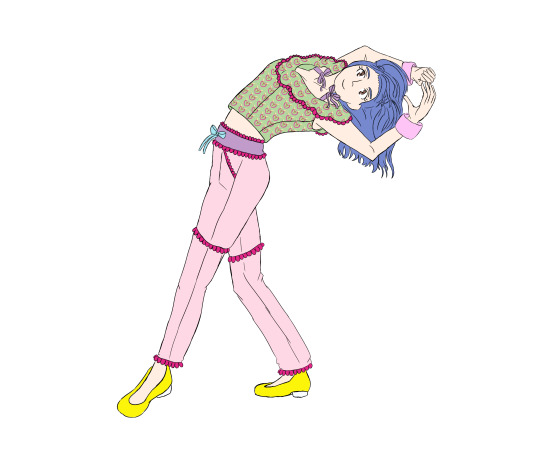


going insane this is the most digital art ive done at once in YEARS
i gotta shade them later
1 note
·
View note
Text


Currently working on designs for my final collection and I guess I’m posessed by an art demon again bc idk how I had this much patience
0 notes
Text
artist end of the year ask game
since ive seen these around for other things (idk if theres one like this yet, if there is then oops)
Favorite drawing from this year
least favorite drawing from this year
first drawing from this year
favorite character you've drawn
favorite little detail in a drawing you did
longest a drawing has taken to finish
most popular drawing
underrated drawing you did
any new art mediums youve tried (or overall styles if you havent tried new mediums)
favorite art medium
artist(s) that influenced/inspired your art style
fandom youve drawn the most for
favorite fandom to make fanart of
how many drawings did you complete this year
any upcoming planned drawings
favorite piece of art from someone else (if you have one)
favorite oc/sona drawing
any art events youve participated in
any collabs youve done/would want to do
what do you think youve improved on the most over the past year
what do you want to work on the most next
what are you best at drawing/doing (ex: youre good at lineart, or drawings hands, etc.)
favorite pose youve drawn
what do you like most about your art style
best advice youve recieved this year or something new you learned about art
feel free to add to this! i just havent seen an art related one and thought it was a neat idea :]
3K notes
·
View notes
Photo

I don’t know when I’ll have time to finish this so here’s a WIP of Mammon and my MC
4 notes
·
View notes
Photo
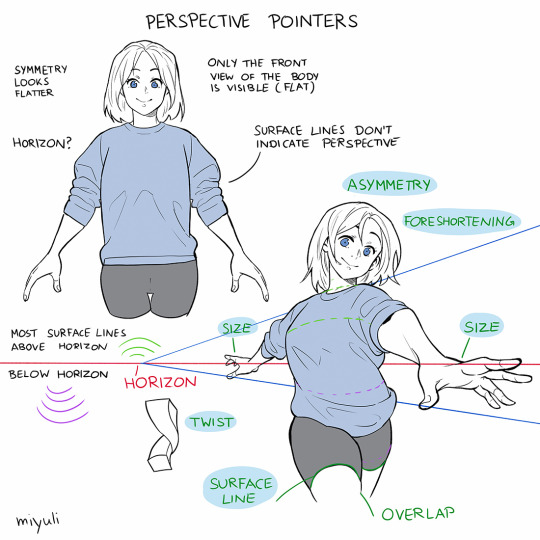
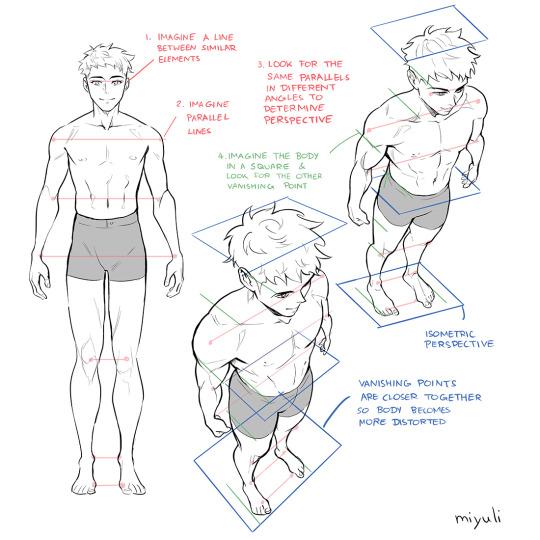
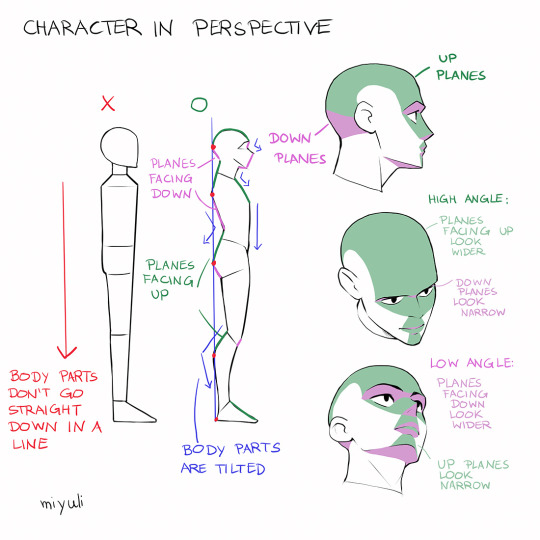
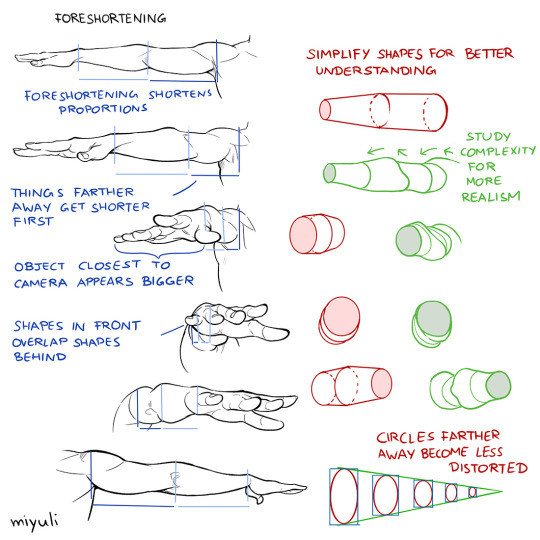
A couple of perspective notes I talked about during my webinar.
I always have more notes on Patreon.
37K notes
·
View notes
